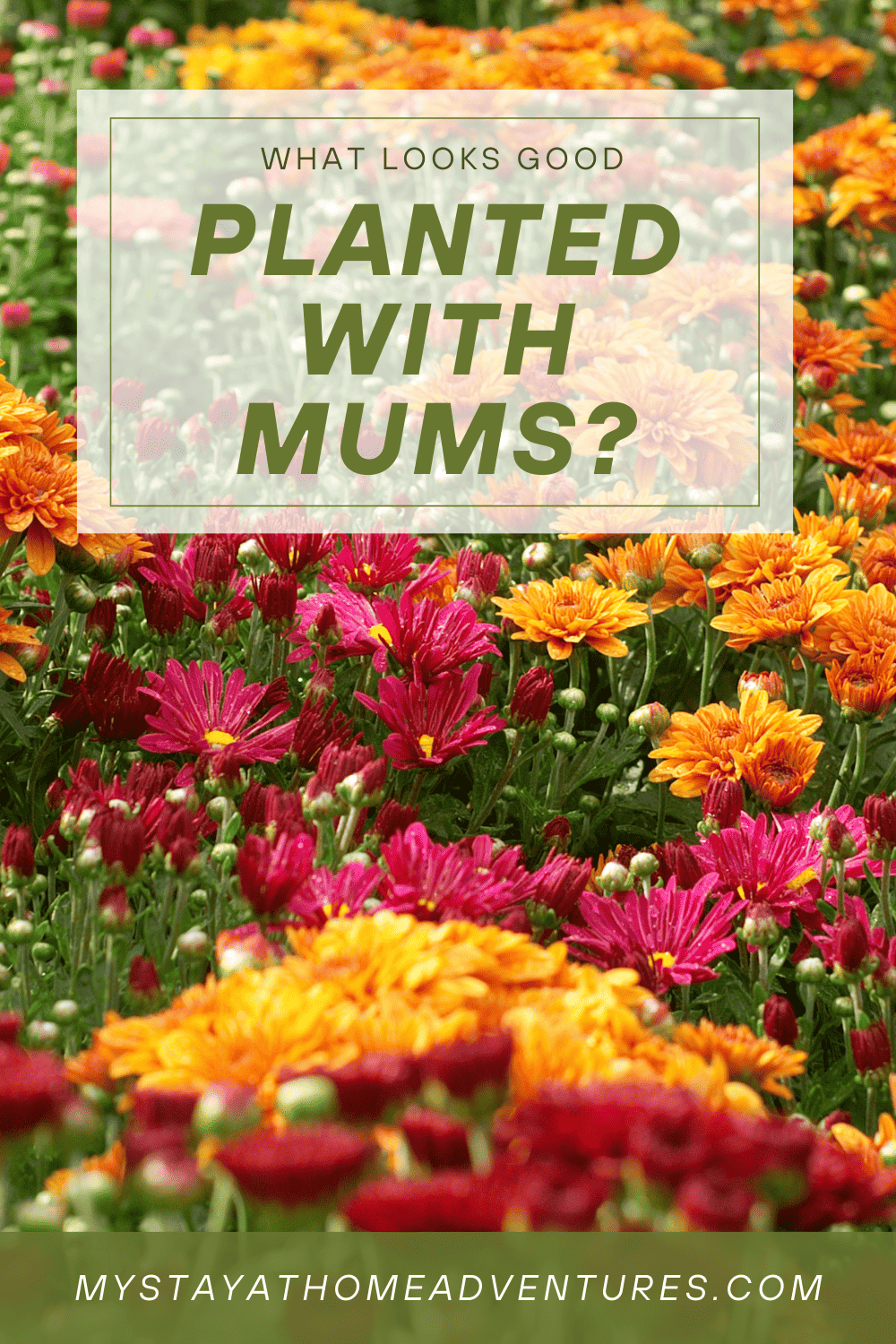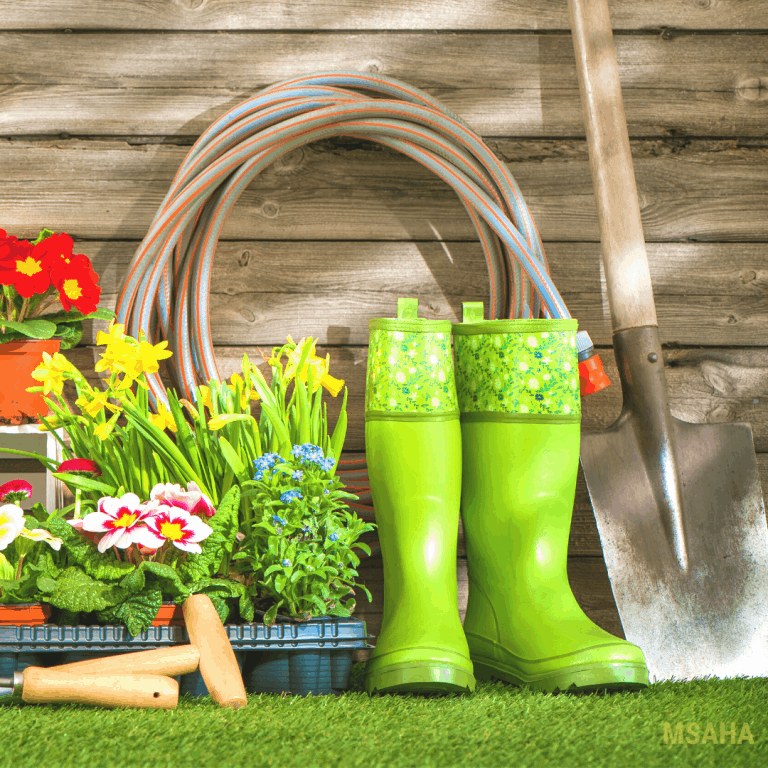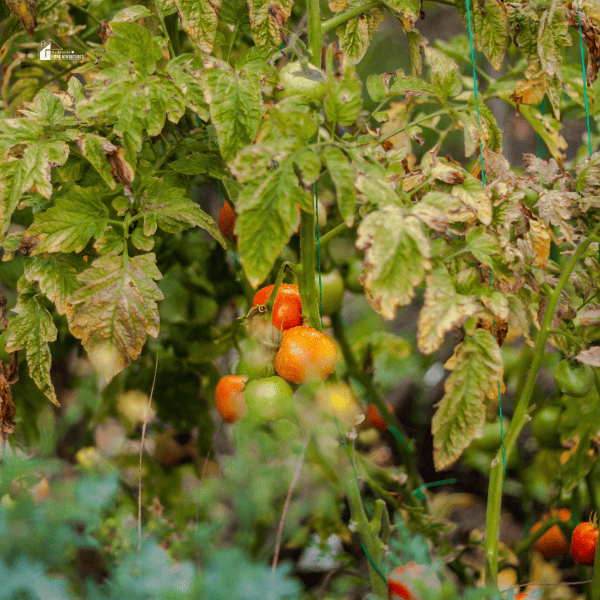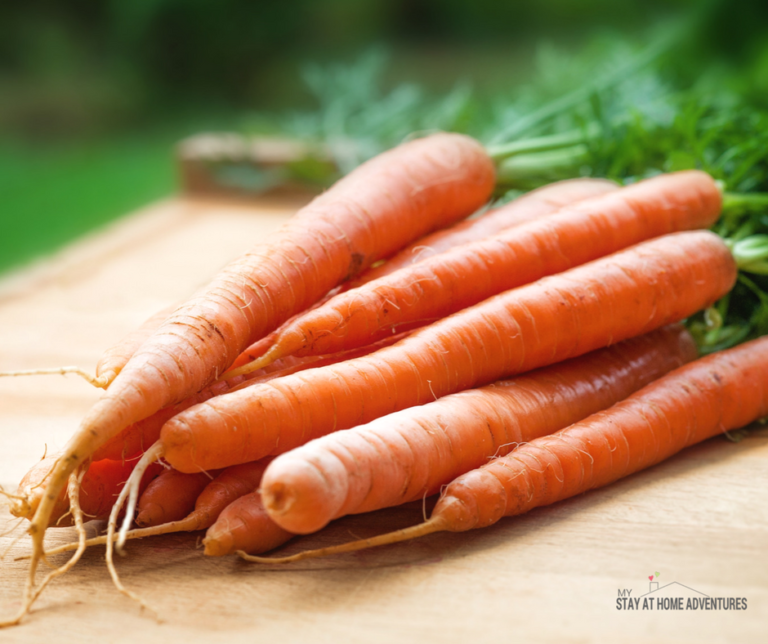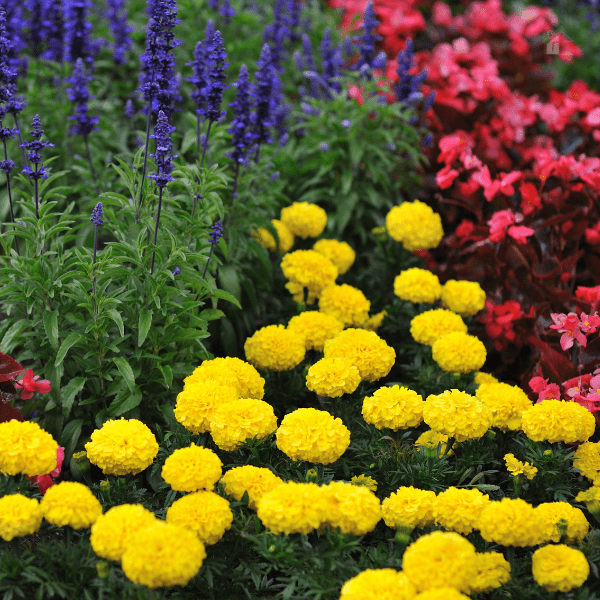What Looks Good Planted With Mums?
This post may contain affiliate links which might earn us money. Please read my Disclosure and Privacy policies here
What looks good planted with mums? Let's find out! When it comes to creating a beautiful garden display, choosing the right companion plants for mums is essential. Not only do these plants complement mums aesthetically, but they also provide additional benefits that enhance the overall beauty of your garden.
What color mums look best together?
When it comes to choosing the best combination of colors for mums, it ultimately depends on personal preference and the desired aesthetic. However, certain color combinations are known to be visually appealing and complementary.
For example, pairing different shades of the same color, such as different tones of pink or purple mums, can create a harmonious and elegant display. Additionally, contrasting colors like yellow and purple or orange and blue can create a vibrant and eye-catching arrangement. Ultimately, the best color combination for mums will vary based on individual taste and the overall visual context in which they are placed.
How do I arrange my garden mums?
Arranging garden mums requires some planning and attention to detail. Firstly, choose a suitable location in your garden that receives full sunlight for at least six hours daily. Next, prepare the soil by removing any weeds or debris and amending it with well-composted organic matter to ensure good drainage.
It's important to space out the mums properly, following the recommended distance for your particular variety. Dig holes slightly larger than each plant's root ball and gently place them in, ensuring they are level with the surrounding soil.
Water thoroughly after planting to settle the soil around the roots. Remember to provide regular watering and fertilization throughout the growing season to promote healthy growth and prolific blooming.
Deadheading spent flowers will encourage more blooms, and you may also consider providing support or staking for taller varieties. Lastly, keep an eye out for pests or diseases, and take appropriate measures to prevent or manage any issues that arise. With proper care and maintenance, your garden mums will thrive and add a vibrant splash of color to your garden.
You might enjoy these posts:
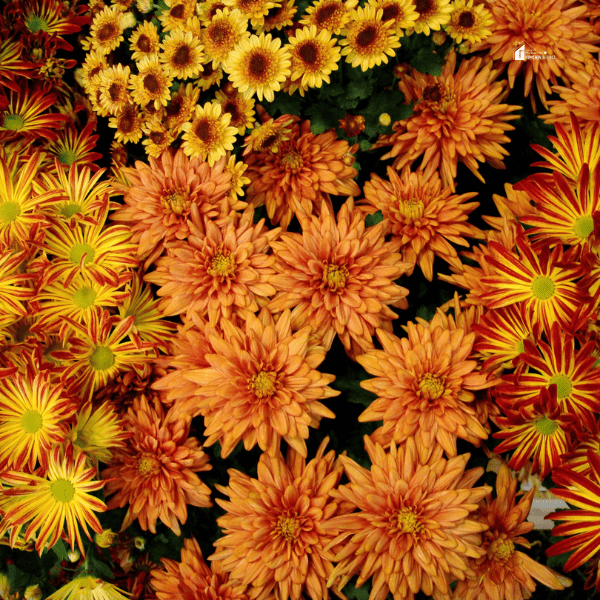
Where is the best place to plant mums?
Regarding the ideal location for planting mums, there are a few key factors to consider. First and foremost, mums thrive in areas with full sun exposure, so choosing a spot that receives at least six hours of direct sunlight each day is important.
Additionally, mums prefer well-draining soil, so it is beneficial to plant them in soil that has been amended with organic matter to improve drainage. Selecting a location that offers protection from strong winds is also advisable, as these can damage the delicate flowers.
Finally, mums should be planted in an area where they have sufficient space to grow and spread, as overcrowding can lead to poor air circulation and increased disease susceptibility.
Considering these factors, one can determine the best place to plant mums and ensure their healthy growth and vibrant blooms.
How close together should you plant mums?
It is generally recommended to plant mums approximately 18 to 24 inches apart. This spacing allows enough room for the plants to grow without overcrowding each other, ensuring proper air circulation and minimizing the risk of diseases.
Additionally, adequate spacing allows each mum plant to receive an adequate amount of sunlight, water, and nutrients from the soil. By following this spacing guideline, gardeners can create a visually appealing display of mums while promoting their longevity and vitality.
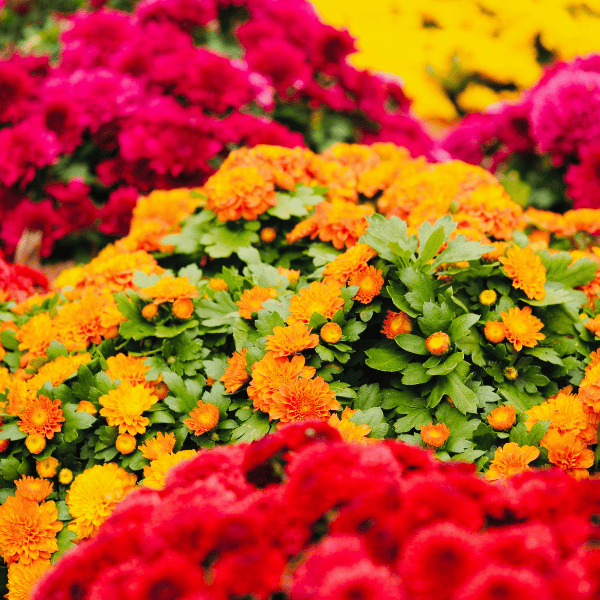
What time of year do you put out mums?
Mums, also known as chrysanthemums, are typically put out during the fall season. These vibrant flowers thrive in cooler temperatures and are often associated with autumn decorations and festivities. Gardeners usually start planting mums in late summer or early fall, as they prefer cooler soil conditions.
Mums are excellent choices for adding pops of color to gardens, porches, and outdoor spaces during the fall months. Their beautiful blooms can last for several weeks, providing a vivid display that complements the changing leaves and the overall ambiance of the season.
Why it's important to choose companion plants for mums
Selecting companion plants for your mums serves multiple purposes. First and foremost, it helps create a visually appealing landscape by adding diversity in colors, textures, and heights. This combination of different plants and flowers creates an eye-catching display that will impress anyone who sees it.
Additionally, companion plants can provide functional benefits to your mums. Some plants serve as natural pest repellents, protecting your mums from potential damage. Others can serve as groundcover, filling in gaps and preventing weed growth around the base of your mums.
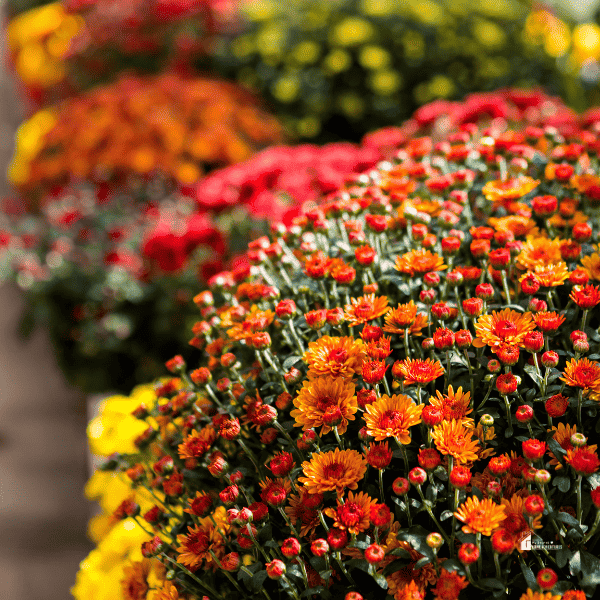
How Companion Plants Enhance the Beauty of Mums
Companion plants can enhance the beauty of your mums in several ways. They can act as a backdrop, providing a contrasting color or foliage that makes your mums stand out even more. Alternatively, they can serve as a complementary element, harmonizing with the colors and shapes of your mums.
Additionally, companion plants can extend the blooming season in your garden. By selecting plants that bloom at different times than your mums, you can enjoy a longer period of vibrant colors and beautiful flowers.
Some popular options for companion plants with mums include ornamental grasses, asters, sedum, marigolds, and salvias. These plants pair well with mums and offer various benefits, such as attracting pollinators or providing interesting foliage throughout the season.
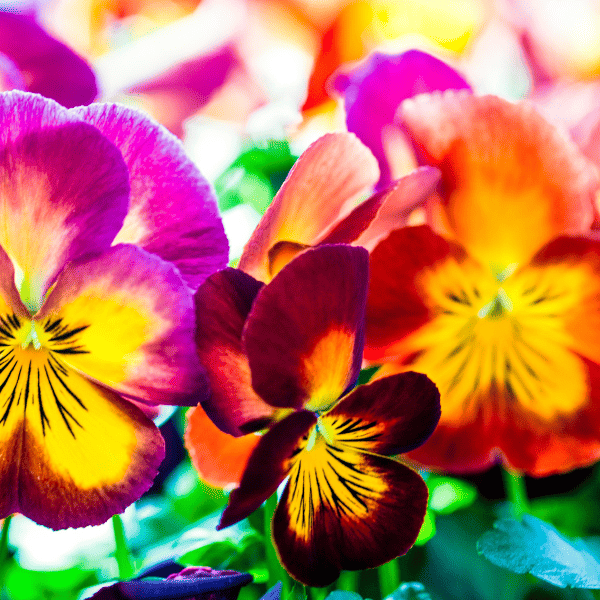
Pansies and Violas
Pansies and Violas as colorful bedding plants for mums
Classic bedding plants such as pansies and violas are a colorful choice for surrounding your chrysanthemums with more color. These plants also grow well in containers. Snapdragons, with their slender stalks of blooms, are a nice foil to the more rounded shape of most mums.
Gerbera daisies are as brightly colored as many chrysanthemums, which makes them an excellent complement to the flowers. Bracteantha or strawflowers look very similar to mums and have the same moist but well-draining soil preferences.
Pair daisy-like chrysanthemums, such as Chrysanthemum x superbums, with similar-looking coneflowers. These perennial plants bloom at the same time as mums and in complementary colors.
Or plant chrysanthemums with Dianthus plants (such as carnations), many of which will remain attractive well into winter. Other perennials that make good companions for chrysanthemums include Lamium, which is a spreading ground cover, and Eupatorium maculatum, or Joe-Pye weed.
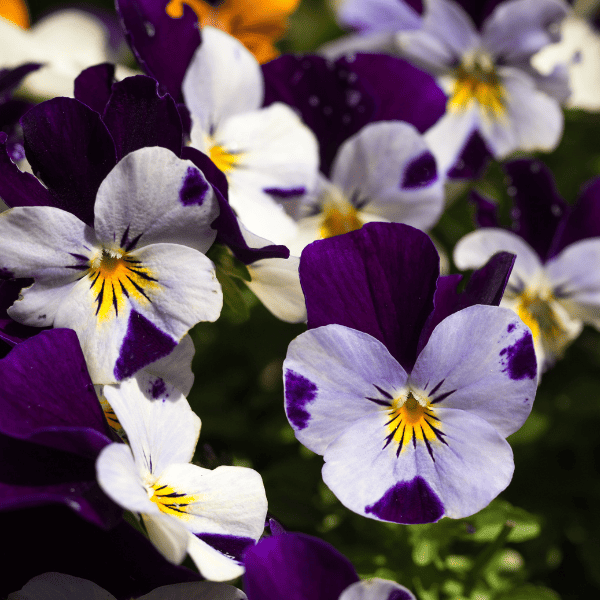
Growing pansies and violas in containers
Create orbs of color with violas that love to bloom. Use sphagnum baskets and add viola plants along the sides, then top the container with more violas. Hang in a sunny location for more optimum splendor.
Give your violas a lift by planting them in strawberry jars. ‘Sorbet Plum Velvet' and ‘Sorbet Icy Blue' violas create a striking combination. Choose a warm color palette to brighten the coming winter days.
A mixture of yellow and orange violas is planted here with several yellow, orange, and red pansies. Use an antique concrete urn and plant the prolific pink blooms of ‘Strawberry Sundae' twin spurs with ‘Penny Lavender Shades' violas and ‘Red Russian' kale.
Pair yellow and purple violas with a cool-season herb such as curly-leaved parsley for an easy-to-care-for display. Here variegated periwinkle and English ivy also serve as green and white accents.
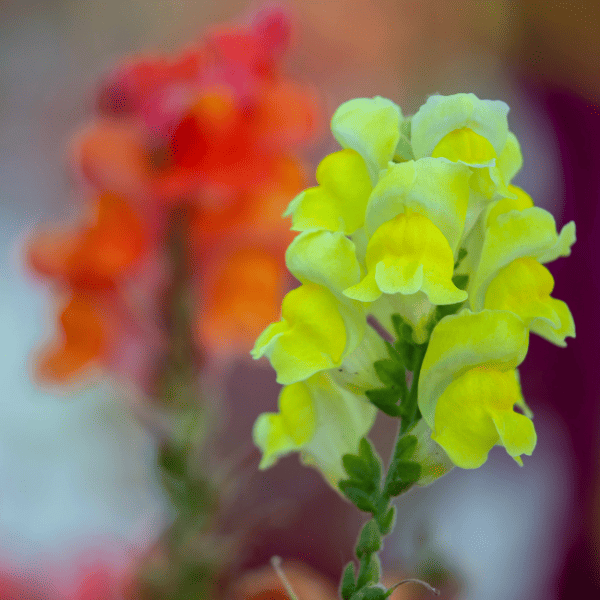
Snapdragons
Snapdragons as a contrasting companion plant for mums
Snapdragons, with their slender stalks of blooms, are a nice foil to the more rounded shape of most mums. The vibrant colors of snapdragons, such as purples, pinks, and reds, create a beautiful contrast against the blooms of mums. This contrasting combination adds visual interest and enhances the overall aesthetic appeal of your garden.
Growing snapdragons alongside mums
When planting snapdragons with mums, make sure to choose a location that receives full sun and has well-draining soil. Snapdragons are annuals in most zones but can be tender perennials in zones 8 and 9 in the southern US.
As the snapdragon grows, you may need to clip away stray branches to keep the growth dense and bushy. Taller varieties of snapdragons might require staking or a trellis for support.
To maintain healthy growth, water the snapdragons regularly in the early stages but reduce watering once the plant becomes established. It is also important to remove spent blooms to promote continuous blooming. The large spike-like flowers of snapdragons create an appealing border or focal point in your garden.
In addition to their aesthetic value, snapdragons can also deter deer from your garden. The foul flavor of the leaves acts as a natural deterrent against deer nibbling on your crops.
You can create a visually striking and well-balanced garden space by incorporating snapdragons as companion plants for mums. These flowers' contrasting colors and shapes will add depth and interest to your outdoor environment.
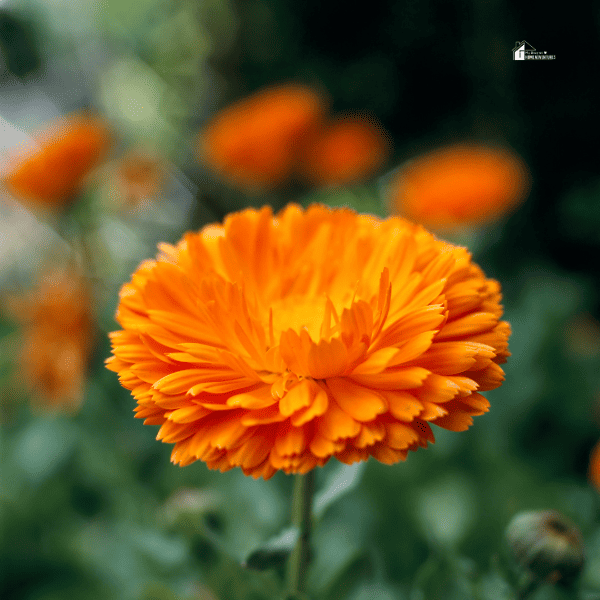
Gerbera Daisies
Looking to create a vibrant and eye-catching display in your garden? Consider planting gerbera daisies alongside mums for a stunning color combination. Gerbera daisies come in a range of bold and vivid colors, making them the perfect complement to mums' rich and earthy tones.
Gerbera Daisies for vibrant color combination with mums
Gerbera daisies are known for their large, daisy-like blooms that add a burst of color to any flower bed. Pairing them with mums, which are known for their dense clusters of flowers, creates a beautiful contrast in texture and color. Consider planting gerbera daisies in shades of red, orange, or yellow alongside mums in shades of burgundy, purple, or pink for a striking and vibrant display.
Caring for gerbera daisies and mums together
To ensure that both your gerbera daisies and mums thrive together, follow these care tips:
- Plant them in well-draining soil that is rich in organic matter.
- Provide ample sunlight for both plants, as they prefer full sun.
- Water them regularly, keeping the soil evenly moist but not waterlogged.
- Deadhead spent blooms to encourage continuous flowering.
- Fertilize them with a balanced fertilizer to promote healthy growth.
By combining gerbera daisies and mums in your garden, you can create a visually stunning and vibrant display that will envy your neighbors.
With proper care and maintenance, these beautiful flowers will bloom throughout the season and provide you with endless joy. So go ahead and experiment with different color combinations to create your own unique floral masterpiece.
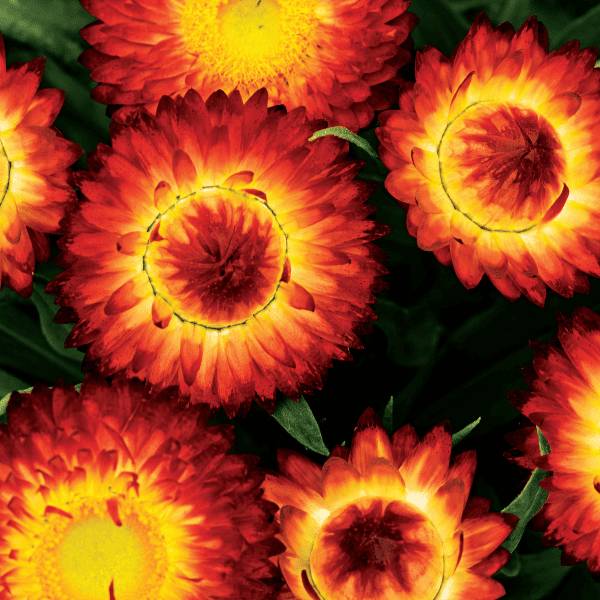
Bracteantha (Straw Flowers)
Bracteantha, also known as straw flowers, bear a striking resemblance to mums. They have similar preferences for moist but well-draining soil and make excellent garden companions. These flowers come in a wide range of colors and can add an extra splash of vibrancy to your mum's displays.
Planting bracteantha with mums
When planting bracteantha with mums, consider their similar appearance and growing requirements. Pair daisy-like chrysanthemums with bracteantha for a cohesive look. They bloom at the same time as mums and offer complementary colors.
In addition to bracteantha, some other annuals and perennials pair attractively with chrysanthemums. Classic bedding plants like pansies and violas provide a colorful choice for surrounding your mums. Snapdragons, with their slender stalks of blooms, create a beautiful contrast to the rounded shape of most mums.
Gerbera daisies are another excellent companion for chrysanthemums. They share the same bright colors and can enhance the overall appeal of your flower displays.
Remember to consider foliage plants as well. With its fall-hued foliage, Heuchera provides an attractive backdrop for showier mums. Ornamental cabbage and kale, with shades of green, cream, and purple, create a lovely arrangement in containers or on the ground.
By strategically combining various plants that thrive alongside mums, you can create stunning displays that showcase the beauty of each individual flower while ensuring they complement one another harmoniously.
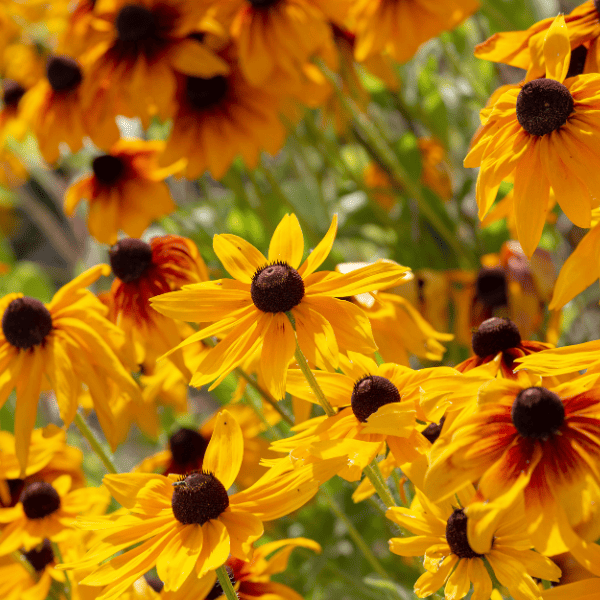
Coneflowers
When it comes to choosing plants to pair with mums, coneflowers are an excellent choice. These daisy-like flowers have a similar aesthetic and beautifully complement mums' shape and color. The tall and sturdy stems of coneflowers provide a striking backdrop for the round, bushy mums, creating a visually appealing display in your garden.
Choosing complementary colors for coneflowers and mums
Consider selecting coneflowers and mums in complementary colors to create an eye-catching combination.
For example, pairing orange coneflowers with purple or burgundy mums can create a vibrant and dramatic color contrast. Alternatively, yellow or white coneflowers can provide a softer and more delicate look when paired with pastel-colored mums.
By carefully selecting coneflowers as companions for your mums, you can create a visually stunning display in your garden.
Whether you pair them based on their similar daisy-like appearance or opt for complementary colors, combining coneflowers and mums will surely enhance the beauty of your flower beds or containers.
So, if you're looking for a plant that looks good planted with mums, look no further than coneflowers. Their stunning blooms and compatibility with mums make them the perfect choice for creating a captivating and harmonious garden design.
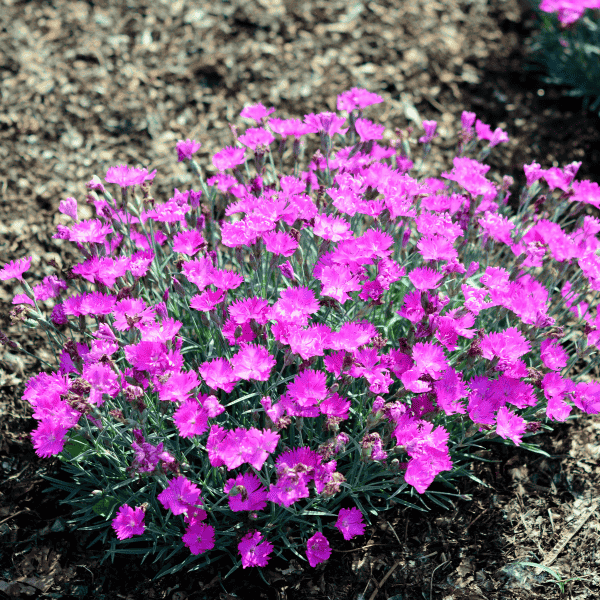
Dianthus (Carnations)
If you want to create a breathtaking display of color and beauty in your garden, pair mums with dianthus, specifically carnations. Dianthus is a perfect companion for mums due to their long-lasting blooms and the variety of colors they come in.
Whether you choose pink, red, white, or any other color, dianthus will add a vibrant burst of color alongside your mums. They complement each other visually and have similar growing requirements, making it easier to care for both plants in the same area of your garden.
Pairing dianthus with chrysanthemums
If you're looking to create a stunning fall-themed garden, consider pairing dianthus with chrysanthemums. With its delicate blooms and compact growth habit, Dianthus contrasts beautifully with chrysanthemums' bold and vibrant flowers.
Combining these two plants creates an eye-catching display that will surely impress anyone who sees it. Plus, both dianthus and chrysanthemums are known for their longevity, so that you can enjoy their beautiful blooms for an extended period.
So, whether you choose carnations or other varieties of dianthus, be sure to incorporate them into your garden alongside mums or chrysanthemums. With their striking colors and long-lasting blooms, they will add a touch of elegance and charm to any garden setting.
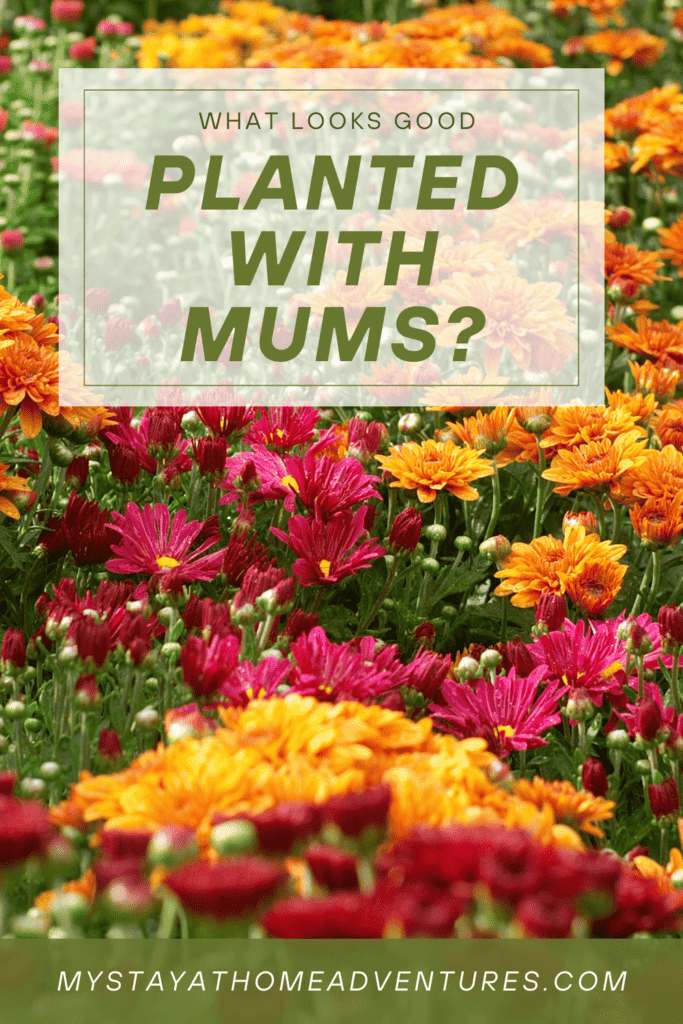
Foliage Plants
When it comes to planting mums, foliage plants can provide the perfect backdrop. These plants enhance your garden's visual appeal and persist into winter, offering a lovely view even after the mums have faded. Here are some foliage plants that pair well with mums:
Using foliage plants as backdrops for mums
- Berry shrubs: The vibrant colors of berry shrubs, such as holly or winterberry, can create a stunning contrast against the mums.
- Sedum: This low-maintenance perennial provides texture and interest with its succulent foliage, making it an excellent choice as a backdrop for mums.
- Conifers: Any conifer, such as spruce or pine, can add a touch of green and provide a beautiful backdrop for your mums.
Heuchera and ornamental cabbage/kale as foliage companions
- Heuchera: With its colorful fall-hued foliage, heuchera can beautifully complement mums' blooms. Its leaves come in shades of red, orange, and purple, adding visual interest to your garden.
- Ornamental cabbage and kale: These plants come in deep green, cream, and purple hues, which make them equally lovely when paired with mums. They can be planted in the ground or in containers to create a stunning display.
By incorporating these foliage plants alongside your mums, you can create a dynamic and visually appealing garden that will look beautiful even after the mums bloom.
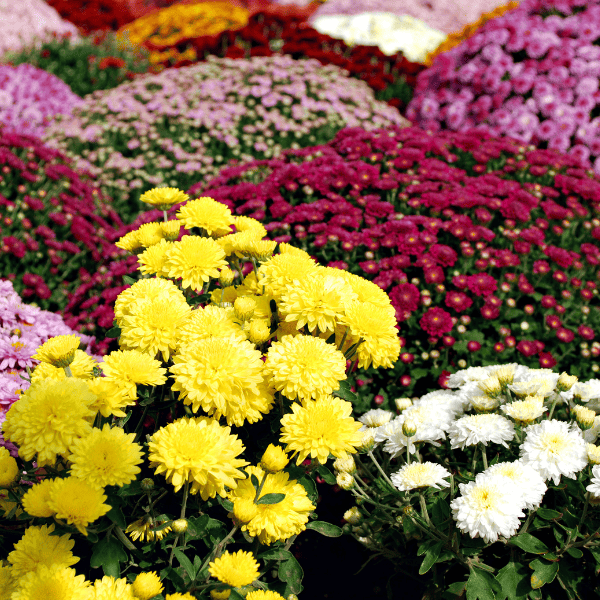
Chrysanthemums and Other Plants
When it comes to planting companions for chrysanthemums, a few options can enhance the beneficial qualities of these flowers and provide protection against harmful insects and pests. Here are some ideas:
Beneficial qualities of chrysanthemums for vegetable and ornamental plants
- Chrysanthemums can attract beneficial insects such as ladybugs, lacewings, and hoverflies, which prey on harmful pests like aphids and whiteflies.
- The strong scent of chrysanthemums can deter certain pests, making them less likely to attack nearby plants.
- Chrysanthemum roots release chemicals into the soil that can suppress the growth of nematodes, which are microscopic worms that can damage plant roots.
Using chrysanthemums as protection against harmful insects and pests
- Planting chrysanthemums near your vegetable garden can help deter pests like aphids, beetles, and caterpillars.
- Intersperse chrysanthemum plants among your ornamental flowers to create a natural pest barrier.
- For added protection, consider planting chrysanthemums alongside other insect-repellent plants, such as marigolds or lavender.
By strategically incorporating chrysanthemums into your garden design, you can maximize their pest-repellent properties while adding beauty and color to your outdoor space.
Experiment with different combinations and observe how these companion plantings benefit your garden's overall health and vitality.

